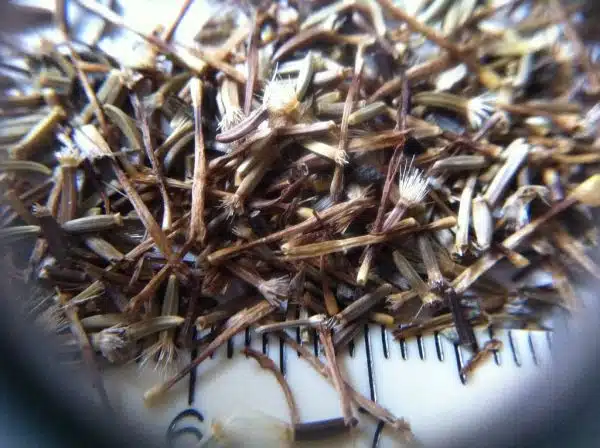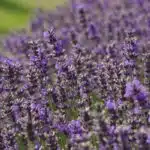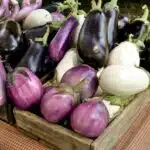The Elecampane plant, also known as Inula helenium, is a perennial herbaceous plant that belongs to the Asteraceae family. It is native to Europe and western Asia and has been used for centuries for its medicinal properties. The plant has a tall stature with large leaves that are hairy and rough in texture. The flowers of the Elecampane plant are yellow and resemble sunflowers, making it a popular ornamental choice in gardens.
Growing an Elecampane plant can be a rewarding experience for both gardeners and herbalists alike. With proper care and attention, this versatile plant can thrive in a range of conditions. In this article, we will discuss the best practices for growing an Elecampane plant, including choosing the right location, soil type, watering, fertilization, pruning, and harvesting. Whether you are looking to add some beauty to your garden or want to harness the healing benefits of this unique herb, our guide will provide you with all the information you need to successfully grow an Elecampane plant.
Introduction To The Elecampane Plant
The elecampane plant, also known as Inula helenium, is a perennial herb that belongs to the sunflower family. This plant has been used for centuries due to its medicinal properties and unique flavor profile. Elecampane is native to Europe, but it can now be found in many parts of the world.
Propagation techniques for elecampane include both seeds and root division. Although the seeds are small and delicate, they are relatively easy to grow if given proper care. Root division is another common technique for growing elecampane because it allows gardeners to propagate multiple plants from a single healthy specimen. Whichever propagation method one chooses, optimal planting conditions should involve well-draining soil with full sun exposure.
Elecampane has been traditionally used for medicinal purposes such as treating respiratory ailments like coughs and bronchitis. It contains various active compounds such as inulin and alantolactone that help reduce inflammation and mucus secretion in the respiratory tract. Additionally, elecampane can stimulate digestion, improve appetite, and even aid in treating skin conditions like eczema. Understanding these benefits of growing elecampane can motivate gardeners to cultivate this herb for their own health benefits or as a natural remedy for others.
Understanding The Benefits Of Growing Elecampane
Having learned about the basics of the elecampane plant, it is essential to understand the benefits that come with growing this herb. One of its most significant advantages is its contribution to respiratory health. The roots of the elecampane plant contain compounds that help to relieve coughs, loosen phlegm, and improve breathing. This makes it an ideal herb for individuals suffering from respiratory illnesses such as asthma, bronchitis, and pneumonia.
Apart from its medicinal properties, elecampane root also has culinary uses. The roots can be used in cooking to add a unique flavor to dishes such as stews, soups, and baked goods. They are also commonly used in herbal teas known for their soothing effect on the digestive system.
If you are interested in growing elecampane plants in your garden or home, there are several factors that you should consider. Firstly, ensure that you choose a location with well-draining soil and adequate sunlight. Elecampane plants thrive in moist soils but do not tolerate waterlogged conditions. Secondly, select a location away from other plants as they tend to spread quickly and take up lots of space. Lastly, ensure that you provide adequate care by watering regularly and fertilizing occasionally.
As you prepare to choose the right location for your elecampane plant(s), keep in mind that this herb is easy to grow and maintain once established successfully. With proper care and attention, it can offer numerous benefits ranging from improved respiratory health to culinary enjoyment!
Choosing The Right Location For Your Elecampane Plant
Where you plant your elecampane is a crucial factor in its growth and overall health. When selecting the location, consider the benefits of sunlight to ensure that your plant gets enough exposure. Elecampane requires full sun to grow optimally, so choose a spot that receives at least six hours of direct sunlight per day.
It is also important to protect your elecampane from extreme weather conditions such as strong winds, frost, and heavy rainfall. While these conditions are not necessarily harmful to the plant, they can cause damage and hinder growth. To protect against these factors, consider planting your elecampane in a sheltered area or near a structure that can provide some protection.
Choosing the right location for your elecampane plant can ultimately determine its success. By ensuring adequate sunlight exposure and protecting it from extreme weather conditions, you set up optimal growing conditions for your plant. In the next section, we will discuss how selecting the right soil type further supports the healthy growth of your elecampane plant.
Selecting The Right Soil Type For Optimal Growth
A crucial factor in the growth of elecampane plants is the type of soil used. In general, elecampane thrives best in well-drained and fertile soils. To ensure optimal growth, it is important to choose a soil that has a pH level between 5.5 and 7.5. This range is ideal because it provides sufficient nutrients for the plant without causing any damage due to acidity or alkalinity.
The pH level of soil determines how well plants can absorb nutrients from the ground. A high or low pH level can limit nutrient availability for plants and cause stunted growth or even death. Therefore, monitoring the pH levels of your soil is very important in ensuring successful cultivation of elecampane plants.
Another factor that can enhance elecampane growth is composting for soil enrichment. Composting involves breaking down organic material into humus, which is rich in nutrients such as nitrogen, phosphorus, and potassium that are essential for plant growth. By adding compost to your soil, you can provide your elecampane plant with all the necessary nutrients it needs to grow strong and healthy. Additionally, compost improves soil structure by improving water retention and drainage capacity.
As we have seen, selecting the right type of soil for your elecampane plant is crucial to its overall health and success. By paying attention to important factors like pH levels and enriching your soil with compost, you can help ensure optimal growth conditions for this beautiful herbaceous perennial plant. In the next section, we will explore some dos and don’ts when it comes to watering your elecampane plant so that you can continue providing excellent care for your beloved herbaceous perennial plant!
Watering Your Elecampane Plant: Dos And Don’ts
Just as selecting the right soil type is crucial for optimal growth, so is watering your elecampane plant. Imagine watering a plant as you would a human being, providing enough water to quench thirst but not too much that it drowns. Overwatering prevention is key in keeping your elecampane plant healthy and thriving.
To prevent overwatering, ensure that your elecampane plant has an adequate drainage solution. This can be achieved by using pots with drainage holes or adding gravel at the bottom of the pot before planting. Additionally, water your elecampane plant only when the top inch of soil is dry to avoid waterlogging the roots which can lead to root rot.
Here are three tips to keep in mind for watering your elecampane plant:
- Water deeply and less frequently rather than shallowly and often.
- Avoid getting water on the leaves as this can promote fungal growth.
- During hot weather, increase watering frequency but be mindful of not overwatering.
Next up, we will cover fertilizing your elecampane plant for maximum health so that it continues to grow strong and produce beautiful blooms.
Fertilizing Your Elecampane Plant For Maximum Health
To ensure maximum health and growth of your elecampane plant, proper fertilization is essential. Using organic fertilizers is recommended as they provide a slow-release of nutrients to the plant without damaging the soil or surrounding environment. Organic fertilizers such as compost, aged manure, and bone meal are excellent choices to provide essential nutrients such as nitrogen, phosphorus, and potassium.
One common mistake in fertilizing elecampane plants is over-fertilization. Excessive amounts of nitrogen can lead to lush foliage but poor root development and lower flower production. It is important to follow the recommended dosage instructions on the fertilizer packaging or consult with a horticulturalist for guidance.
Another mistake is not fertilizing enough. Elecampane plants require regular feeding during their growing season, which typically lasts from spring to fall. Failing to provide adequate nutrients can result in stunted growth, yellowing leaves, and poor flower production.
Incorporating organic fertilizers into your elecampane plant care routine will help promote healthy growth and beautiful blooms. However, it is important to be mindful of common mistakes such as over-fertilization or under-fertilization. Following recommended guidelines or consulting with a horticultural expert can help ensure optimal results for your plant’s health and vitality. In the subsequent section, we will discuss tips and tricks for pruning your elecampane plant for continued success in its growth journey.
Pruning Your Elecampane Plant: Tips And Tricks
Proper pruning techniques are essential to maintain the health and appearance of your elecampane plant. Pruning involves cutting back branches or stems in a specific way to promote growth, remove dead or diseased material, and shape the plant. Regular pruning can help keep your elecampane plant healthy and vigorous, but it’s important to follow a maintenance schedule that suits your plant’s needs.
To prune your elecampane plant effectively, you should first identify any damaged or diseased areas of the plant. This may include dead leaves or branches, brown spots on the leaves, or signs of insect infestation. Once you have identified these areas, use clean pruning shears to make precise cuts just above a healthy leaf node or bud. Be sure to sterilize your tools before and after each cut to prevent the spread of disease.
Next, focus on shaping your elecampane plant by removing any unwanted growth or crossing branches. You can also encourage fuller growth by pinching back new shoots and removing spent flowers. A good maintenance schedule for pruning is every spring when new growth begins to emerge and again in late summer when flowering has ended.
Overall, proper pruning techniques are crucial for maintaining a healthy and attractive elecampane plant. By following a maintenance schedule that includes regular inspection for damage or disease and shaping through precise cuts and pinching back unwanted growth, you can ensure that your plant remains vibrant year after year.
In order to protect your elecampane plant from pests and diseases, it’s important to take additional steps beyond regular pruning. These may include monitoring for common pests like spider mites or aphids, using organic pesticides as needed, providing proper irrigation and drainage to prevent root rot, and avoiding overcrowding with other plants. By taking these preventative measures in addition to regular pruning techniques, you can help keep your elecampane plant healthy and thriving for years to come.
Protecting Your Elecampane Plant From Pests And Diseases
Pest control is an essential part of protecting elecampane plants from damage. Practices such as inspecting the plant regularly for signs of pests and using organic insecticides can help to reduce the risk of infestation. Disease prevention is also critical for the well-being of elecampane plants. Proper soil drainage, avoiding wet foliage, and avoiding overcrowding are key steps to help reduce the risk of fungal or bacterial diseases. Additionally, providing the plant with necessary nutrients is essential for a healthy, strong elecampane plant. Adequate fertilization, proper watering, and a balanced pH level in the soil are essential for plant nutrition. By following these horticultural practices, gardeners can ensure that their elecampane plants remain healthy and disease-free.
Pest Control
As a horticulturalist, one of the most challenging aspects of growing elecampane plants is protecting them from pests and diseases. Pests such as aphids, spider mites, and cutworms can cause significant damage to the plant’s leaves and roots. In order to ensure that your plant remains healthy and vibrant, it is important to take proactive measures against these threats.
One effective way to control pests on your elecampane plant is through natural remedies. Using chemical pesticides can be harmful not only to the plant but also to other beneficial insects in your garden. Instead, try using companion planting techniques such as planting garlic or chives near your elecampane. These plants have natural insect-repelling properties that will help keep pests away while promoting overall plant health.
In conclusion, protecting your elecampane plant from pests and diseases requires a combination of preventative measures and quick action when problems arise. By utilizing natural remedies such as companion planting and keeping a close eye on your plant’s health, you can ensure that it thrives in your garden for years to come.
Disease Prevention
As a horticulturalist, it is essential to consider the prevention of diseases in addition to pests when growing elecampane plants. Common diseases that affect elecampane include leaf spot, powdery mildew, and root rot. These diseases can cause significant damage and even death to the plant if left untreated. Therefore, it is crucial to take proactive measures to prevent diseases from occurring.
One effective way to prevent disease in your elecampane plant is through natural remedies. Chemical fungicides can be harmful not only to the plant but also to other beneficial organisms in your garden. Instead, try using companion planting techniques such as planting marigolds or calendula near your elecampane. These plants have natural anti-fungal properties that will help keep diseases at bay while promoting overall plant health.
Another important factor in disease prevention is maintaining proper growing conditions for your elecampane plant. Elecampane thrives in well-draining soil with plenty of sunlight and adequate moisture levels. Overwatering or poor drainage can lead to root rot and other fungal infections. Additionally, overcrowding plants can create a humid environment that promotes disease growth. Ensuring adequate spacing between plants and proper ventilation will help reduce the risk of disease.
In conclusion, preventing diseases in your elecampane plant requires a combination of natural remedies and proper growing conditions. By utilizing companion planting techniques and maintaining optimal growing conditions, you can prevent common diseases from damaging your plant’s health and overall productivity.
Plant Nutrition
One crucial aspect of protecting your elecampane plant from pests and diseases is ensuring that it receives adequate nutrition. Proper plant nutrition is essential for promoting plant health, preventing disease and pest infestations, and increasing overall productivity. One effective way to provide your elecampane with the necessary nutrients is through composting. Composting benefits your garden in many ways, including adding organic matter to the soil, improving soil structure, and enhancing nutrient availability.
Composting provides a natural source of organic pest control by promoting beneficial organisms such as earthworms, microbes, and fungi that help keep pests at bay while providing essential nutrients to the plants. Additionally, compost helps create a healthy soil environment that enables plants to better absorb nutrients from the soil. A lack of proper nutrition can weaken plants and make them more susceptible to diseases and pests.
In conclusion, proper plant nutrition plays a vital role in protecting your elecampane plant from pests and diseases. Composting offers an excellent way to ensure that your elecampane receives the necessary nutrients while promoting organic pest control. By providing your elecampane with optimal growing conditions such as adequate sunlight, appropriate spacing between plants, natural remedies like companion planting techniques and maintaining good plant hygiene practices like regular pruning, you can create a healthy environment that will help prevent diseases and pests from damaging your plant’s health.
Harvesting Your Elecampane Plant: When And How
After protecting your elecampane plant from pests and diseases, it’s time to think about harvesting. Preserving elecampane is an important aspect of growing this plant, as it can be used for various medicinal purposes. Elecampane roots are the main part of the plant that is harvested, but leaves and flowers can also be used.
The best time to harvest elecampane is in the fall, after the first frost has occurred. This allows the sugars in the roots to concentrate and makes for a more potent harvest. When digging up the roots, be sure to leave some behind so that the plant can regrow next year. Common mistakes in harvesting elecampane include not waiting long enough for the plant to mature or taking too much of the root system.
Once you have harvested your elecampane, it’s important to dry and store it properly. Spread out your roots on a screen or hang them upside down in a cool, dry place with good air circulation. Once they are fully dried, store them in airtight containers away from sunlight and moisture. With proper care and attention during harvest and preservation, your elecampane plant will provide medicinal benefits for years to come.
Transitioning into tips for successful propagation of elecampane: Another way to ensure that your elecampane plant thrives is through successful propagation techniques.
Tips For Successful Propagation Of Elecampane
Like a skilled sculptor shaping a piece of clay, propagating Elecampane requires patience, precision, and care. Propagation techniques vary depending on the type of Elecampane plant and the desired outcome. One common method is to propagate through root cuttings taken in late winter or early spring. Cuttings should be about 4-6 inches long with several nodes and should be planted in well-draining soil.
Common mistakes when propagating Elecampane include overwatering, using poor quality soil, and not providing sufficient light. Overwatering can cause roots to rot, stunting growth or even killing the plant altogether. Poor quality soil can lead to nutrient deficiencies or disease, while insufficient light can result in weak stems and poor growth. It is important to monitor your plants closely and make adjustments as needed.
Successful propagation of Elecampane requires careful attention to detail throughout the process. By using proper propagation techniques and avoiding common mistakes, you can ensure that your plants thrive and flourish for years to come. Remember that every plant is unique, so take the time to learn about your specific species of Elecampane and tailor your care accordingly. With patience and dedication, you can enjoy a beautiful garden full of healthy, vibrant plants.
Conclusion
The Elecampane plant is a unique and beneficial addition to any garden. With its tall stature, bright yellow flowers, and medicinal properties, it is a plant that is both beautiful and useful. To successfully grow an Elecampane plant, it is important to choose the right location, soil type, and watering techniques. Pruning and protecting your plant from pests and diseases are also crucial steps in ensuring optimal growth.
Harvesting your Elecampane plant at the right time is essential for capturing its medicinal properties. Successful propagation can also be achieved with proper techniques. Overall, growing an Elecampane plant requires attention to detail, but the rewards of having this versatile plant in your garden make it well worth it.
In conclusion, incorporating an Elecampane plant into your garden can provide numerous benefits. From its aesthetic appeal to its potential medicinal properties, this unique plant offers an array of advantages. By following the proper steps for growth and maintenance, you can successfully cultivate a thriving Elecampane plant in your own backyard.
Image Credits
- “Elecampane” by John and Anni (featured)





























